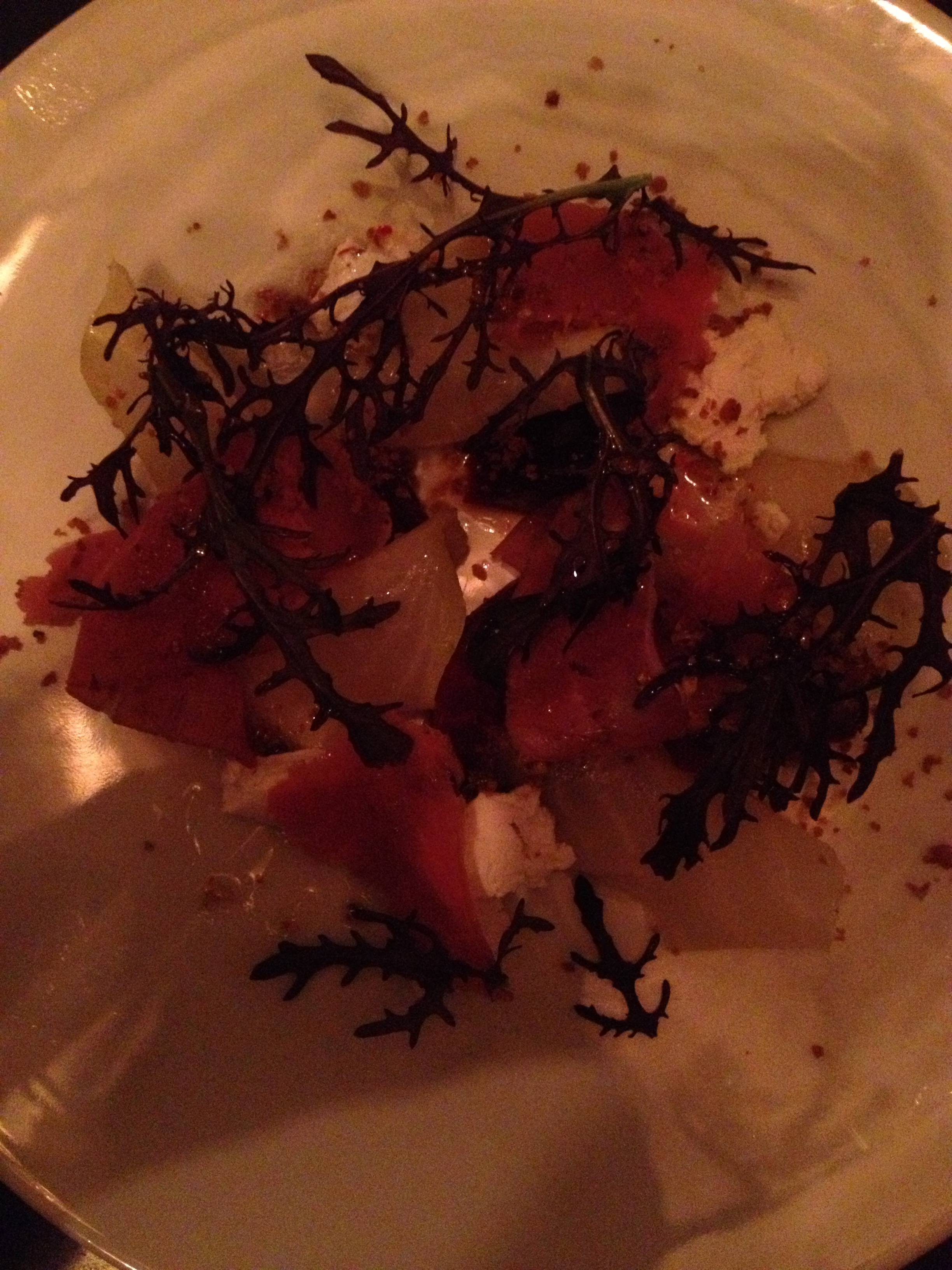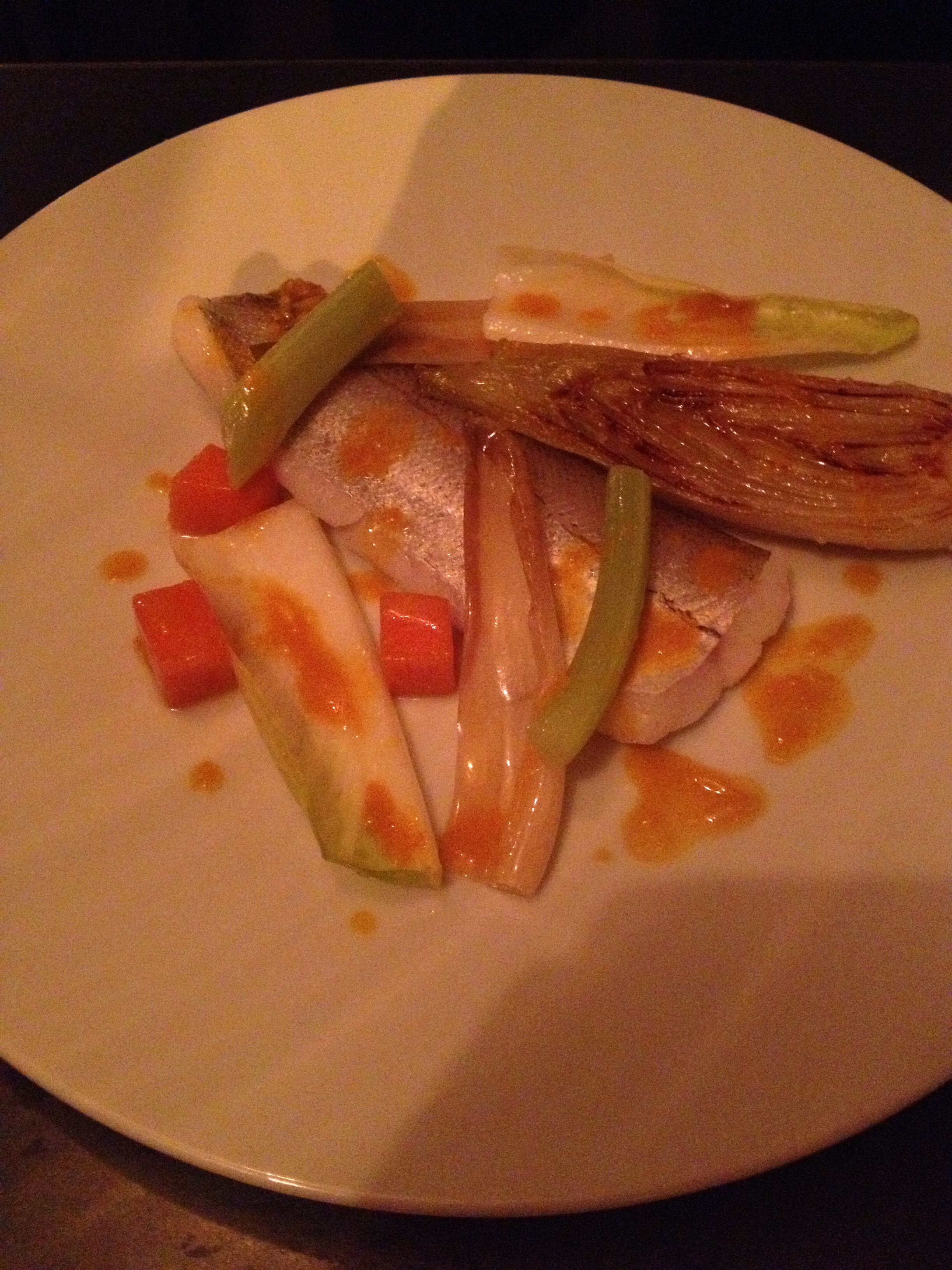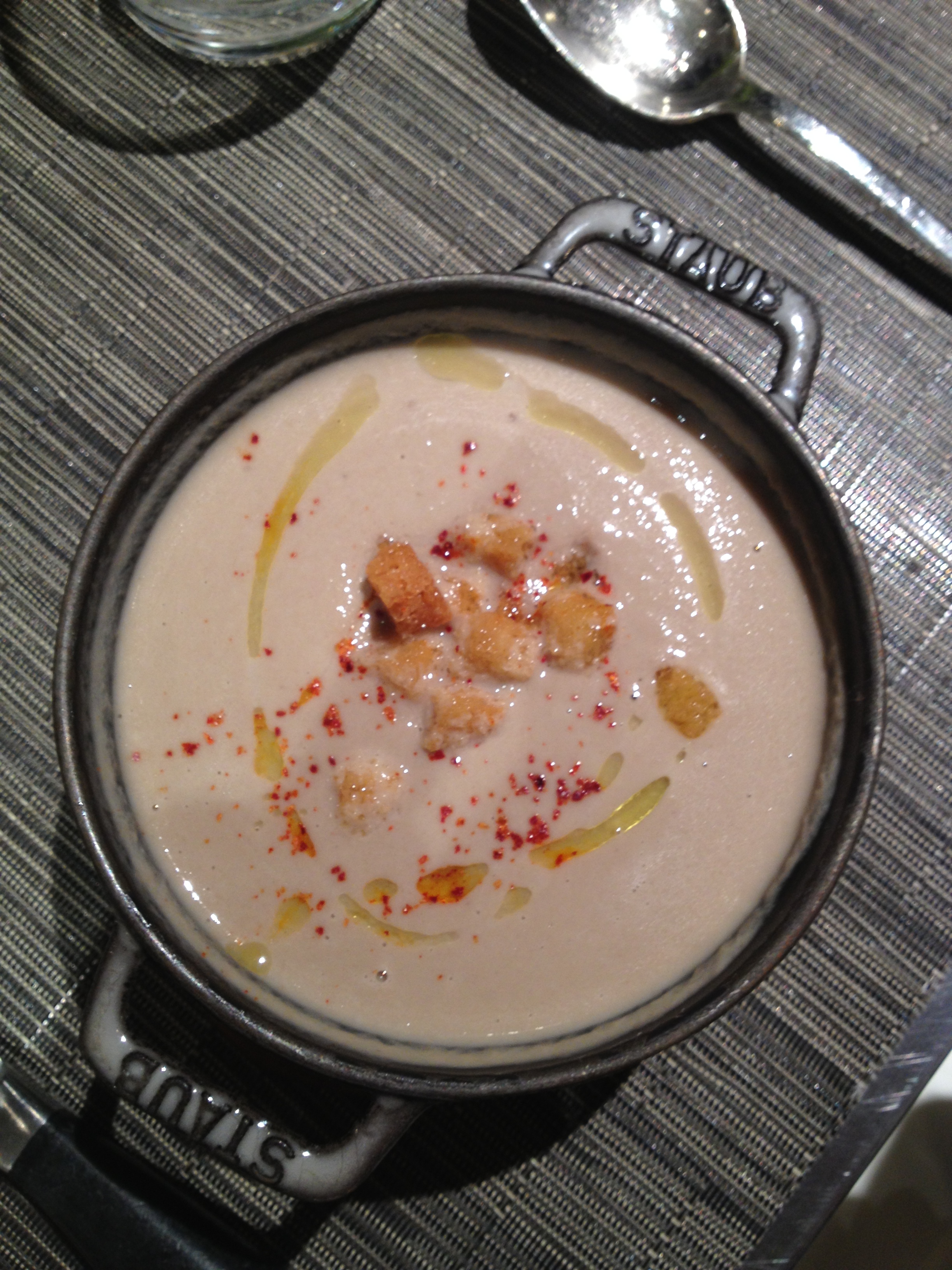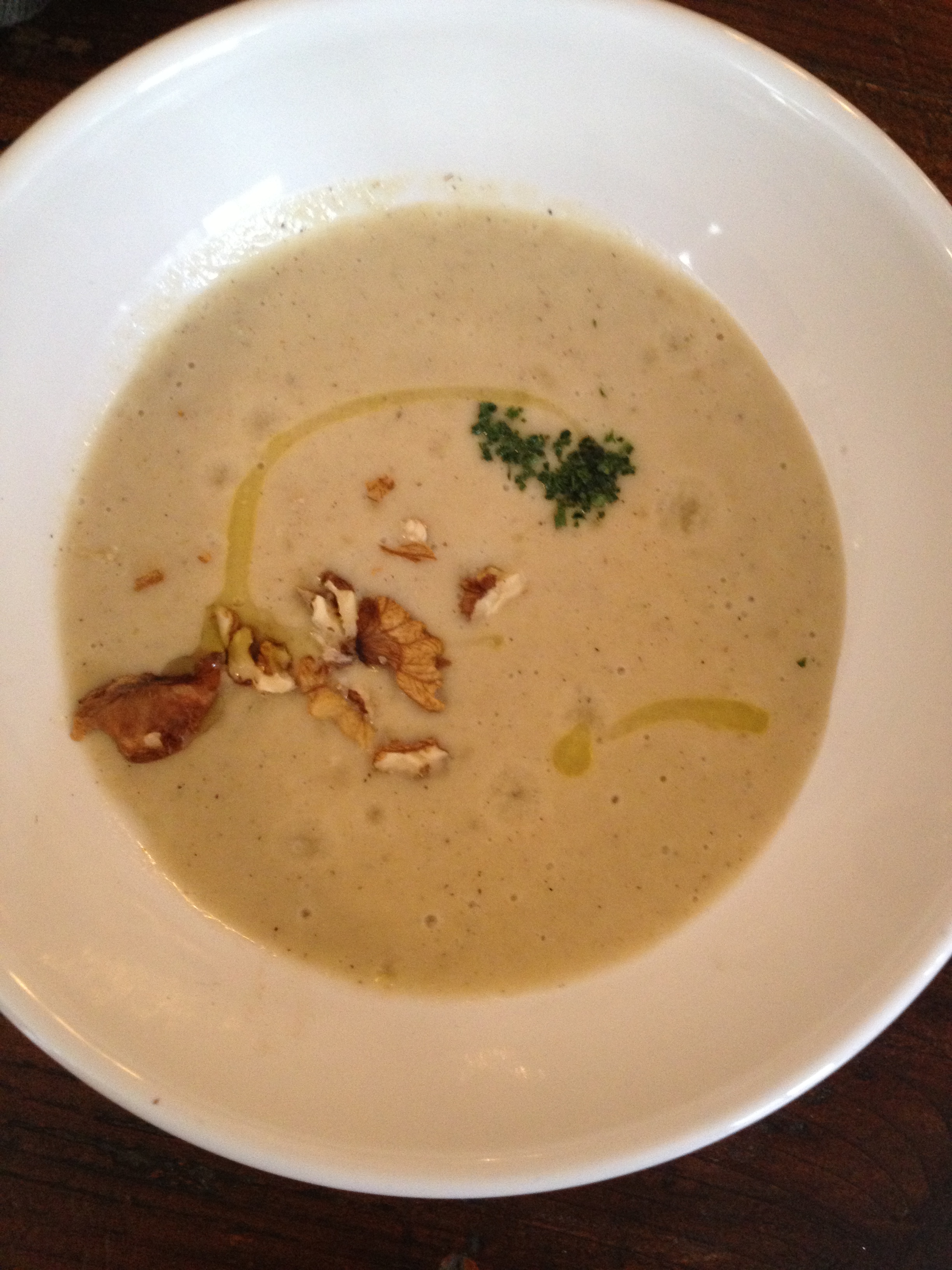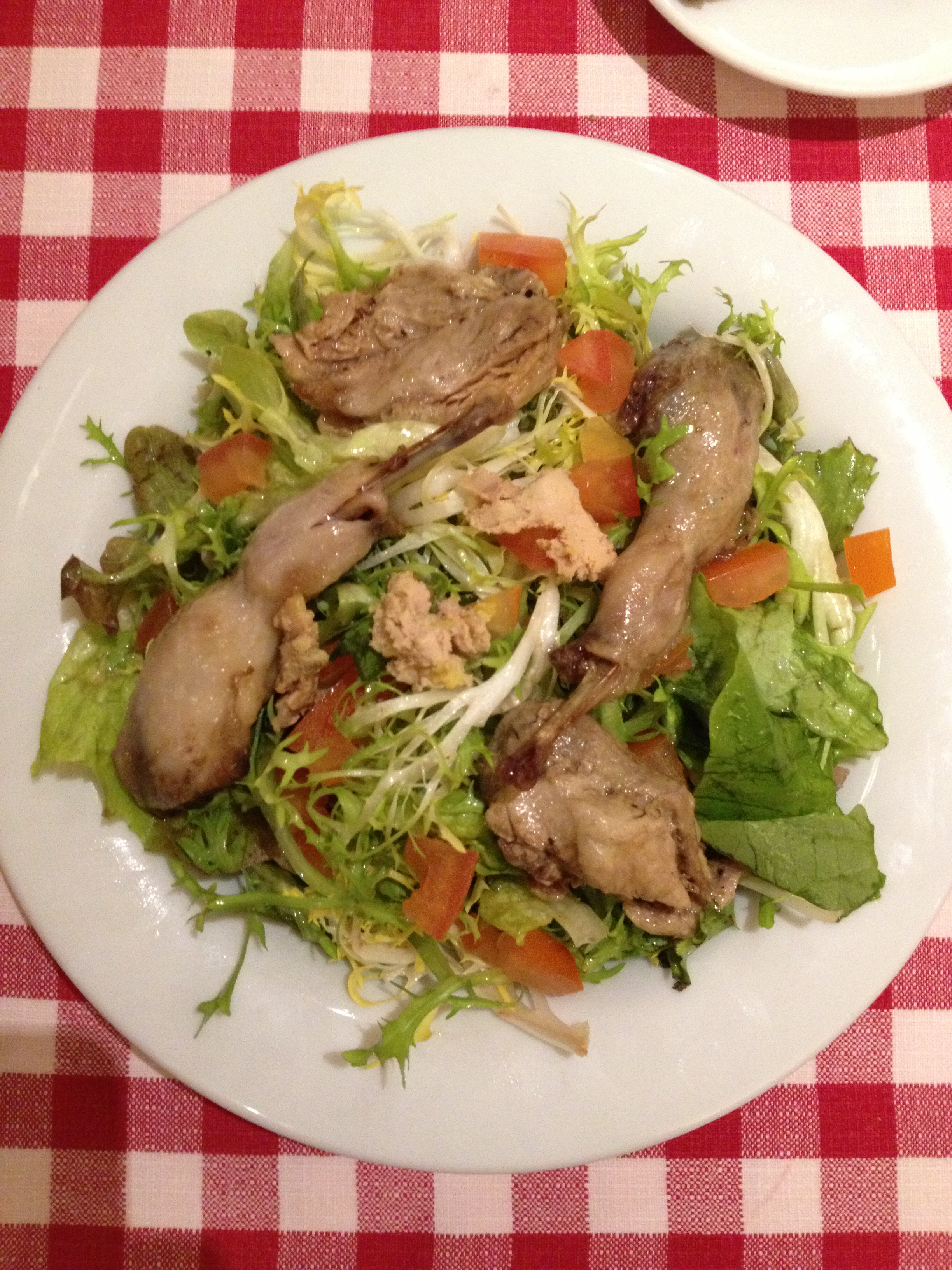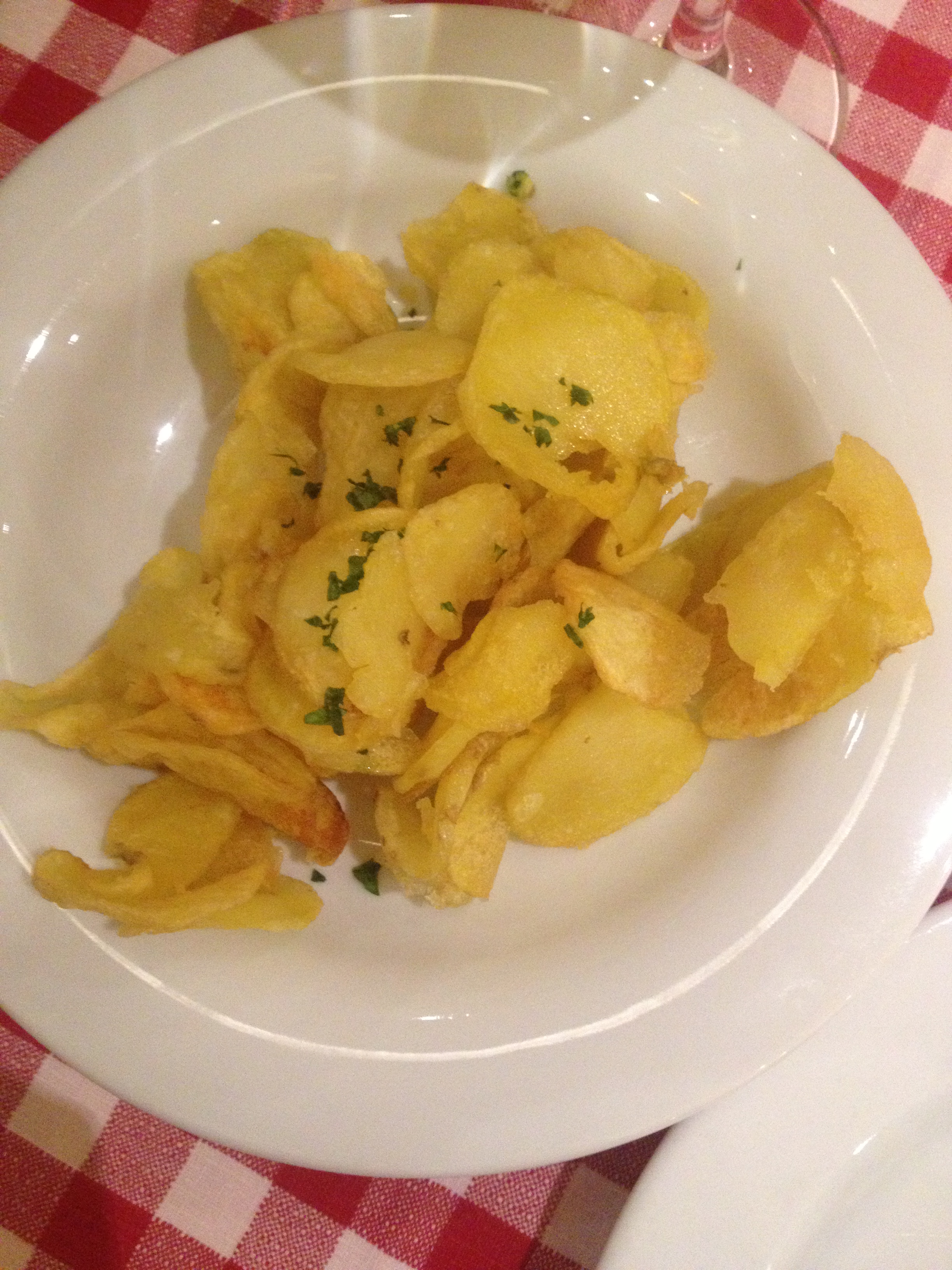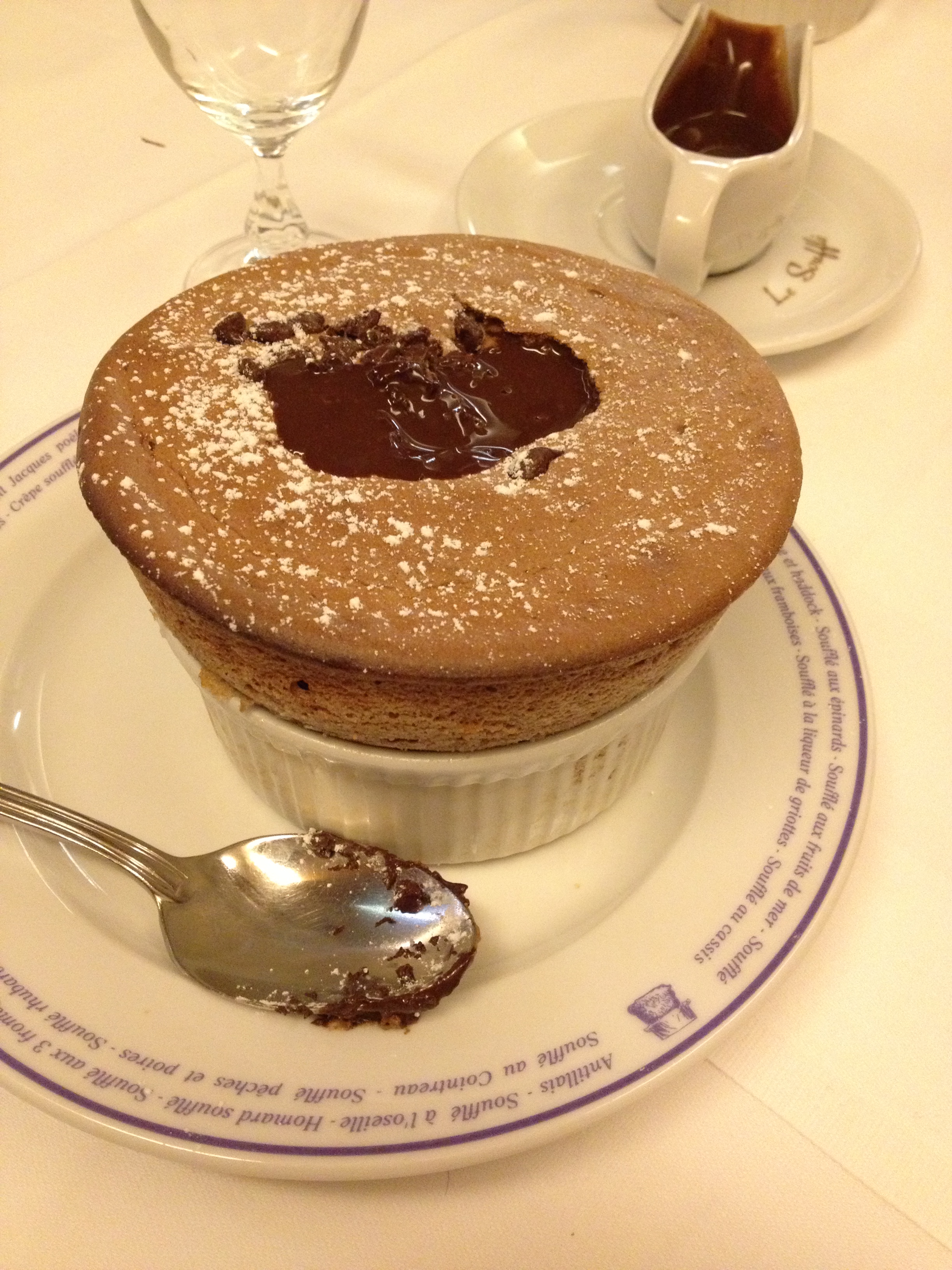Paris is as much a city of food as a city of lights. It seems like in every corner exists a café, a boulangerie, a brasserie or a bistro. That is to say there is no shortage of gastronomic temptations to deal with. There is a running joke that asks why French women are so skinny despite eating much bread and butter (and foie gras). The answer is because they drink a lot of red wine and smoke. If smoking is not for you, you’ll simply have to control yourself.
Food is not overly expensive. The bill is called “l’addition” perhaps because prices include tax and tip so the calculation is a simple sum of menu prices. This standard effectively nullifies the EURCAD conversion. Parisian prices can then simply be read as though they were Canadian for comparability. The overwhelming standard in Paris is the multi-course meal. It is odd that prix-fixe, a French word, is never used. Instead, a menu is a full course meal, generally ranging between 3 to 5 courses for a fixed price. They are about 20€ for lunch and 30€ for dinner. This is indeed rather cheap, considering similar offers are only seen in Toronto during summerlicious and winterlicious. A formule, on the other hand, is a lighter prix-fixe, and only includes two courses. This tradition is replicated in notable American-French restaurants like Café Boulud or Jean George Nougatine. Again, formules are generally inexpensive. Some (but not all) restaurants also have à la carte.
My first dabble into French restaurants was unsuccessful. An undirected surveying of the thousands of holes-in-the-walls is sure not to achieve pleasant results. As in any city, there is a range of culinary quality suited for a range of tastes. Not all Frenchmen are foodies, contrary to popular belief.
Furthermore, consulting solely the Michelin Guide is insufficient. The Michelin guide rewards a particular type of food that might be described as antiquated and boring. The Michelin standard is that of haute-cuisine, of formality and rigorous adherence to the culinary standards of the past. In many ways, Paris thrives on the vestiges of the past. It is behind in almost everything except subways and healthcare. But antiquated cuisine still has its place to play. Many restaurants from the Michelin guide have been delightful.
Le Cantine du Troquet
14th
01 45 40 04 98
32€ Lunch/Dinner Menu, 5 courses
Le Cantine du Troquet, for example, is tucked away in the outer ring of Paris and serves simple food from its blackboard menu in a relaxed atmosphere. There is no website and no reservations; even its telephone number is hard to find. The waiters speak only French. The appetizer came with five small plates, which I thought were the five courses of the menu. I was about to pay when the second course came. Most memorable of the five was a cauliflower soup that had little specks of chorizo scattered around. They had mostly sunk to the bottom, and ended up as a delicious scraping from the bottom of the barrel. The traditional five-course meal has fish thereafter, then meat, then salad and finally dessert. Unfortunately, primed by the American system, the salad just makes you want to start over. None of the dishes were extraordinary but worked well in an ensemble, further supported by the affordable price tag. Since it was a carte-blanche (i.e. the menu is a surprise), every visit is novel and since they describe the food in French, every bite might be surprising.
Septime
11th
01 43 67 38 29
www.septime-charonne.fr
Closed Monday lunch, Saturday and Sunday
Reservation required
55€ Dinner, 5 courses, carte blanche
There is a bit of a gastronomical revolution in Paris. Bistros and restaurants are replaced by ateliers (workshops) and comptoirs (counters). There is a modernization of food that is at odds with the traditional definition of haute-cuisine. This makes guides like Michelin less relevant; it implores you to go online to find some innovative options. Septime, for example, is solidly booked by a youthful clientele. They are ever so stingy about bookings that my spot was cancelled after they could not reach me on my phone (I had given them my Canadian number). They also had my email, but did not think of using that avenue; the French always surprise me with their listless nonchalance. I was stuffed into a claustrophobic corner, where I ate in silence beside an unsmiling Frenchman (it is decidedly French not to smile). Notwithstanding this, the five course meal (55€) was rather good, punctuated by a dessert as memorable as any. A luscious orange ice cream in the centre was surrounded by almost-frozen citrus fruits, crunchy candied sugar, buttery crème fraiche and other mouthwatering egg-shaped concoctions. That the chef was an artist by profession shows.
Les Cocottes
7th
http://www.maisonconstant.com/les-cocottes
No reservations, always open
Confit de foie gras de canard, pain de campagne 14€
Velouté de champignons de saison légèrement crémé 7€
Pommes de terre caramélisées farcies au pied de porc 15€
For some guilt-inducing richness, try Les Cocottes, by famed French chef Christian Constant; for some inexpensive haute-cuisine, walk down a dodgy 11th arrondissement path to behold the friendly and simple Au Passage.
Au Passage
11th
01 43 55 07 52
Dinner only Saturday; Closed Sunday
20€ Lunch, 3 courses + cheese plate
The average food in Paris is certainly good. But an affinity for the past and an aversion to risk-taking has made the culinary scene a bit dull. Integration and uniformity pervades the food but it is artistry and experimentation that I am looking for. The cuisine in Toronto is affordable, varied and thoughtful. I have been spoiled by that culinary wonderland. Paris might very well show its cards, but the Michelin guide is not it. We will see how the food turns as I explore further. I still have some high hopes.
Les Cailloux
13th
01 45 80 15 08
20€ lamb chops
L’auberge Aveyronnaise
12th
01 43 40 12 24
24€ Dinner, 3 courses
Le Soufflé
1st
01 42 60 27 19
10€ for a soufflé

